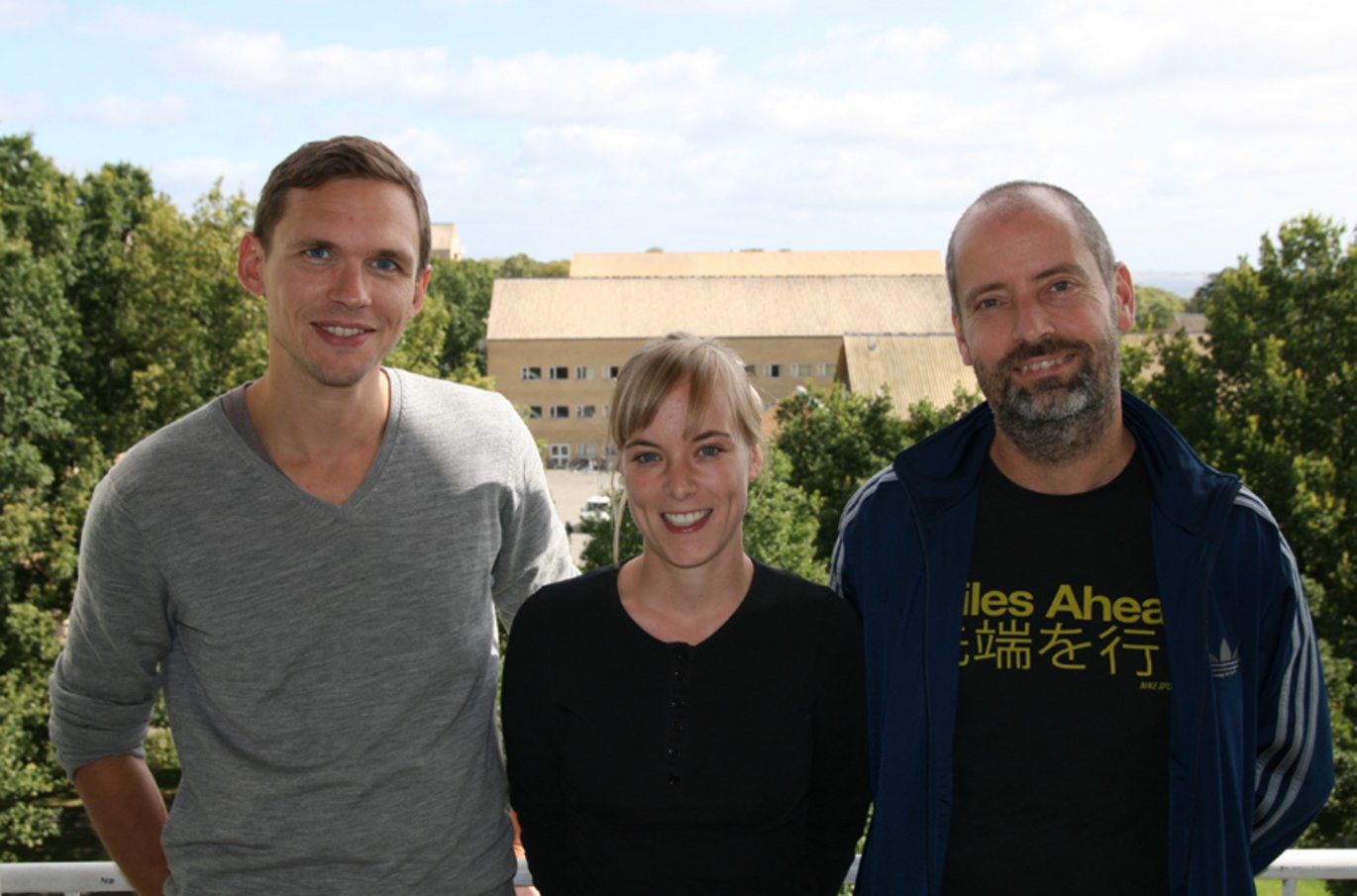Length matters in gene expression
A research team at Aarhus University reveals a surprising interplay between the ends of human genes: If a protein-coding gene is too short it becomes inactive! The findings also explain how some short genes have adapted to circumvent this handicap.

Gene ends communicate
Human genomes harbour thousands of genes, each of which gives rise to proteins when it is active. But which inherent features of a gene determine its activity? Postdoctoral Scholar Pia Kjølhede Andersen and Senior Researcher Søren Lykke-Andersen from the Danish National Research Foundation’s Centre for mRNP Biogenesis and Metabolism have now found that the distance between the gene start, termed the ‘promoter’, and the gene end, the ‘terminator’, is crucial for the activity of a protein-coding gene. If the distance is too short, the gene is transcriptionally repressed and the output is therefore severely decreased. This finding outlines a completely new functional interplay between gene ends.
Small genes utilise specialised terminators
Fortunately, most human protein-coding genes are long and are therefore not repressed by this mechanism. However, some genes, e.g. ‘replication-dependent histone genes’, are very short. How do such genes express their information at all? Interestingly, many of these differ from the longer protein-coding genes by containing specialised terminators. And in fact, if such a specialised terminator replaces a normal terminator in a short gene context, the short gene is no longer transcriptionally repressed. It therefore appears that naturally occurring short genes have evolved ‘their own’ terminators to achieve high expression levels.
The new findings add to a complex molecular network of intragenic communication and help us to understand the basic function of genes.
The researchers behind the results that have just been published in the international journal Genes & Development are affiliated with the Danish National Research Foundation’s Centre for mRNP Biogenesis and Metabolism at the Department of Molecular Biology and Genetics, Aarhus University.
Link to the article in Genes & Development:
Promoter-proximal polyadenylation sites reduce transcription activity
Pia K. Andersen, Soren Lykke-Andersen, and Torben Heick Jensen
Department of Molecular Biology and Genetics, Centre for mRNP Biogenesis and Metabolism, C.F. Møllers Allé, Building 1130, Aarhus University, 8000 Aarhus C, Denmark
Further information
Postdoctoral Scholar Pia Kjølhede Andersen
pia@mb.au.dk – +45 8715 5516
Professor Torben Heick Jensen
Director of the Centre for mRNP Biogenesis and Metabolism
Department of Molecular Biology and Genetics
Aarhus University, Denmark
thj@mb.au.dk – +45 6020 2705 – www.mRNP.dk
Text: Pia Kjølhede Andersen og Lisbeth Heilesen
Translation: Lisbeth Heilesen
